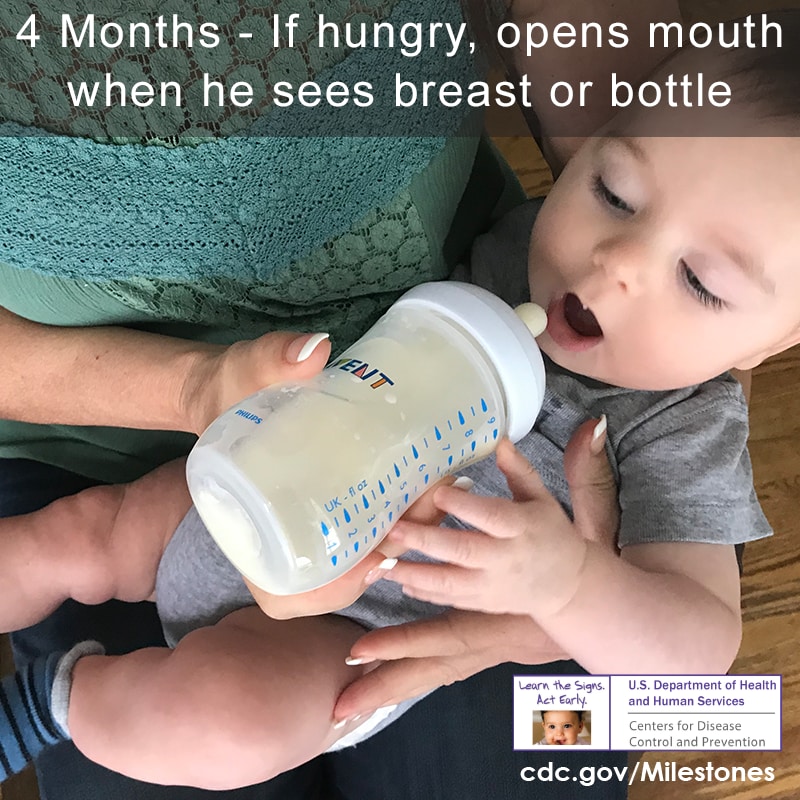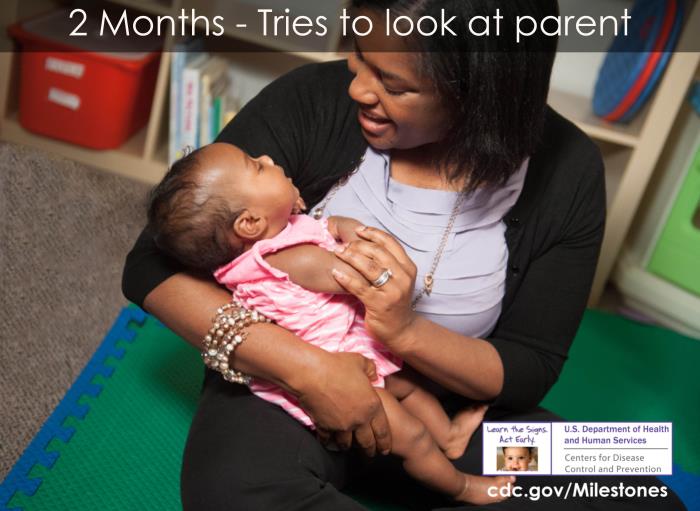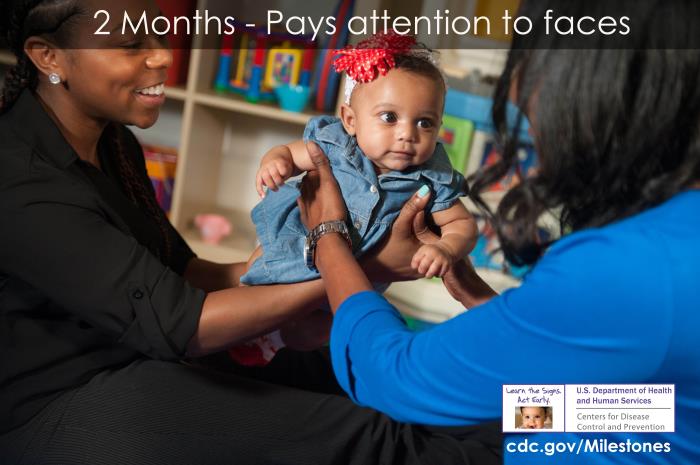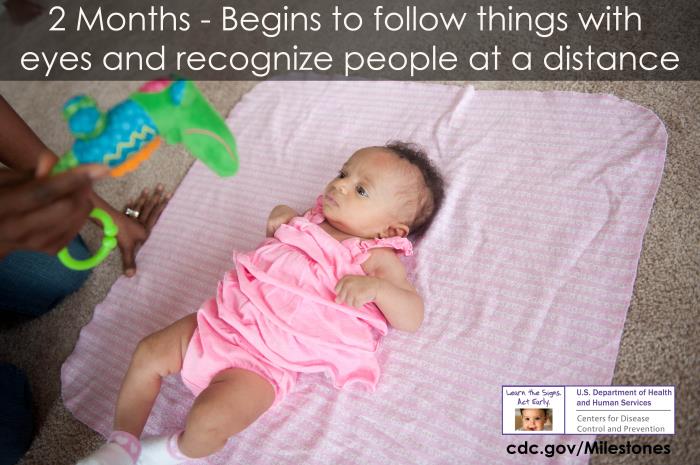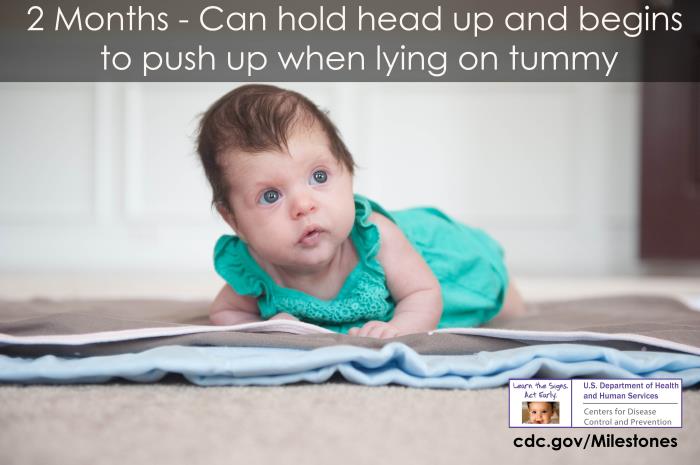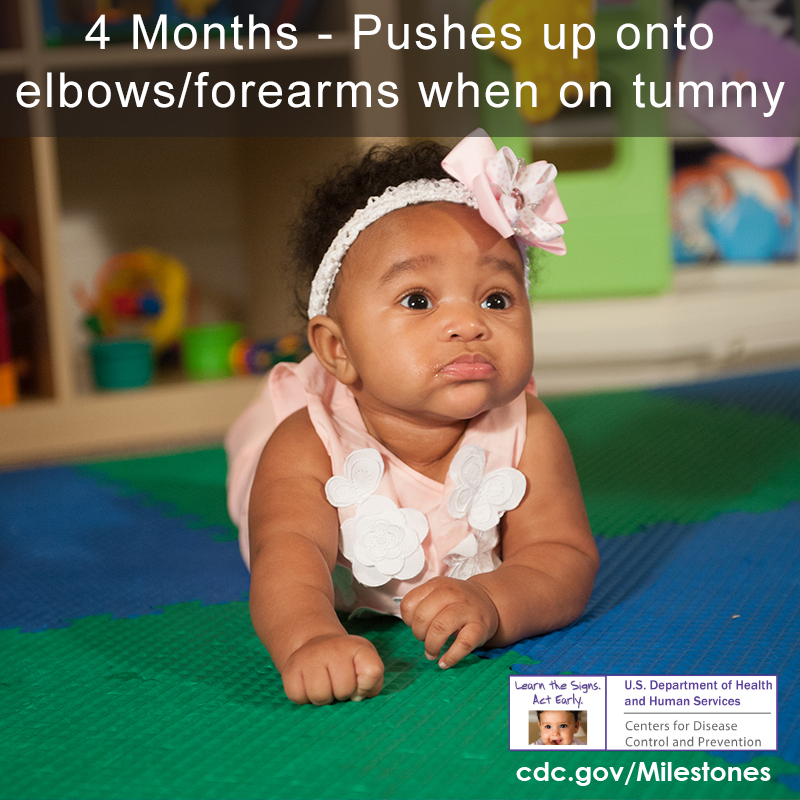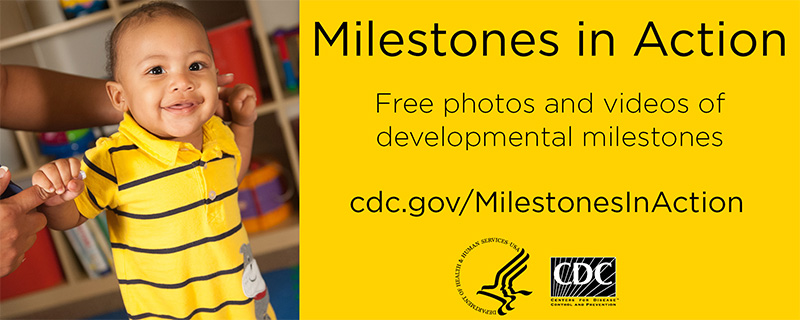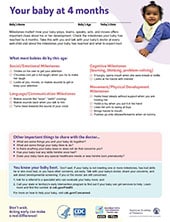Important Milestones: Your Baby By Four Months
CDC’s milestones and parent tips have been updated and new checklist ages have been added (15 and 30 months). For more information about the updates to CDC’s developmental milestones, please review the Pediatrics journal article and these important key points.
How your child plays, learns, speaks, acts, and moves offers important clues about your child’s development. Developmental milestones are things most children (75% or more) can do by a certain age.
Check the milestones your child has reached by 4 months by completing a checklist with CDC’s free Milestone Tracker mobile app, for iOS and Android devices, using the Digital Online Checklist, or by printing the checklist [908 KB, 2 Pages, Print Only] below.
“Learn the Signs. Act Early.” materials are not a substitute for standardized, validated developmental screening tools.
What most babies do by this age:
Social/Emotional Milestones
- Smiles on his own to get your attention
- Chuckles (not yet a full laugh) when you try to make him laugh
- Looks at you, moves, or makes sounds to get or keep your attention
Language/Communication Milestones
- Makes sounds like “oooo”, “aahh” (cooing)
- Makes sounds back when you talk to him
- Turns head towards the sound of your voice
Cognitive Milestones (learning, thinking, problem-solving
Movement/Physical Development Milestones
Other important things to share with the doctor…
- What are some things you and your baby do together?
- What are some things your baby likes to do?
- Is there anything your baby does or does not do that concerns you?
- Has your baby lost any skills he/she once had?
- Does your baby have any special healthcare needs or was he/she born prematurely?
Concerned About Your Child’s Development?
Act Early.
You know your child best. Don’t wait. If your child is not meeting one or more milestones, has lost skills he or she once had, or you have other concerns, act early. Talk with your child’s doctor, share your concerns, and ask about developmental screening.
If you or the doctor are still concerned:
- Ask for a referral to a specialist who can evaluate your child more; and
- Call your state or territory’s early intervention program to find out if your child can get services to help. Learn more and find the number at cdc.gov/FindEI.
For more on how to help your child, visit cdc.gov/Concerned.

As your baby’s first teacher, you can help his or her learning and brain development. Try these simple tips and activities in a safe way. Talk with your baby’s doctor and teachers if you have questions or for more ideas on how to help your baby’s development.
- Respond positively to your baby. Act excited, smile, and talk to him when he makes sounds. This teaches him to take turns “talking” back and forth in conversation.
- Provide safe opportunities for your baby to reach for toys, kick at toys and explore what is around her. For example, put her on a blanket with safe toys.
- Allow your baby to put safe things in his mouth to explore them. This is how babies learn. For example, let him see, hear, and touch things that are not sharp, hot, or small enough to choke on.
Special acknowledgments to the subject matter experts and others who contributed to the review of data and selection of developmental milestones, especially Paul H. Lipkin, MD, Michelle M. Macias, MD, Julie F. Pajek, PhD, Judith S. Shaw, EdD, MPH, RN, Karnesha Slaughter, MPH, Jane K. Squires, PhD, Toni M. Whitaker, MD, Lisa D. Wiggins, PhD, and Jennifer M. Zubler, MD.
Sincere gratitude to Natalia Benza, MD and José O. Rodríguez, MD, MBA for their thoughtful review of the Spanish-language translation of these milestones.

